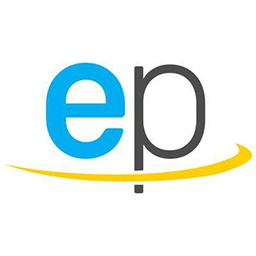New family expands acclaimed PSoC 4 architecture offering
25-02-2015 | Cypress | Semiconductors
Cypress Semiconductor has introduced a new product family featuring its PSoC
4 programmable system-on-chip architecture. The new PSoC 4 M-Series expands
the acclaimed PSoC 4 architecture by delivering more programmable analog and
digital blocks, 128KB flash memory, a direct memory access controller, dual
control area network (CAN) interfaces and 55 general-purpose I/Os with the
32-bit ARM-Cortex-M0 core - making it a natural fit to replace existing 8-
and 16-bit applications.
Additionally, the devices extend the design flexibility of the PSoC
architecture to a wide range of sensor-based systems in home appliance,
automotive and system management control applications, says the company.
"Our PSoC 4 portfolio enables customers to replace their 8- and 16-bit
MCU-based products and seamlessly migrate to a 32-bit ARM platform for as
low as 25-cents," said John Weil, vice president of PSoC marketing, Cypress.
"Our new PSoC 4 M-Series expands the PSoC 4 portfolio and now enables
designers to create even more custom interfaces and analog front ends to add
differentiation, functionality and performance to their products and create
world-class, innovative solutions."
The PSoC 4 M-Series delivers 16 programmable digital blocks including eight
timer/counter/PWM blocks, four serial communication blocks and four
Universal Digital Blocks-Cypress's programmable digital blocks containing
two programmable logic devices, a programmable data path and status and
control registers. The programmable digital blocks can implement
coprocessors to offload compute-intensive tasks from the included ARM
Cortex-M0 core, which traditionally were only available in 8- and 16-bit
platforms. Further, the blocks enable engineers to create emerging or custom
serial communication interfaces in the available programmable hardware, such
as support for Pulse-Density Modulation microphones and the USB Type-C
configuration channel protocol, which typically required new silicon
platforms from traditional microcontroller (MCU) vendors.
The PSoC 4 M-Series delivers 12 programmable analog blocks including four
highly configurable op-amps, four current-output digital-to-analog
converters (IDACs), two low-power comparators, a 12-bit SAR ADC and a
CapSense capacitive touch-sensing block. The programmable analog blocks
enable engineers to create on-chip, custom analog front ends to support new
end-product features like sensors for wearable devices without increasing
product costs, size or power consumption. Cypress's industry-leading
CapSense capacitive touch-sensing technology enables engineers to add
sophisticated user interfaces with advanced features like proximity sensing
and water tolerance.
The scalable PSoC 4 architecture is complemented by the easy-to-use PSoC
Creator Integrated Design Environment (IDE), which simplifies system design
and accelerates time-to-market by enabling concurrent hardware and firmware
design, and PSoC Components-free embedded ICs represented by an icon in the
IDE. Together they enable rapid prototyping of end applications while
minimizing PCB spins and firmware changes that are typically required.
PSoC 4 M-Series is built on the low-power PSoC 4 architecture and offers
five low-power modes to minimize system power consumption. It supports a low
leakage retention power mode, using only 150nA while retaining SRAM,
programmable logic and the ability to wake up from an interrupt. It also
offers a best-in-class non-retention stop mode down to 20nA with a GPIO
wakeup capability.
Embedded World 2015, Both 259, Hall 5, Nuremberg.

By Electropages

